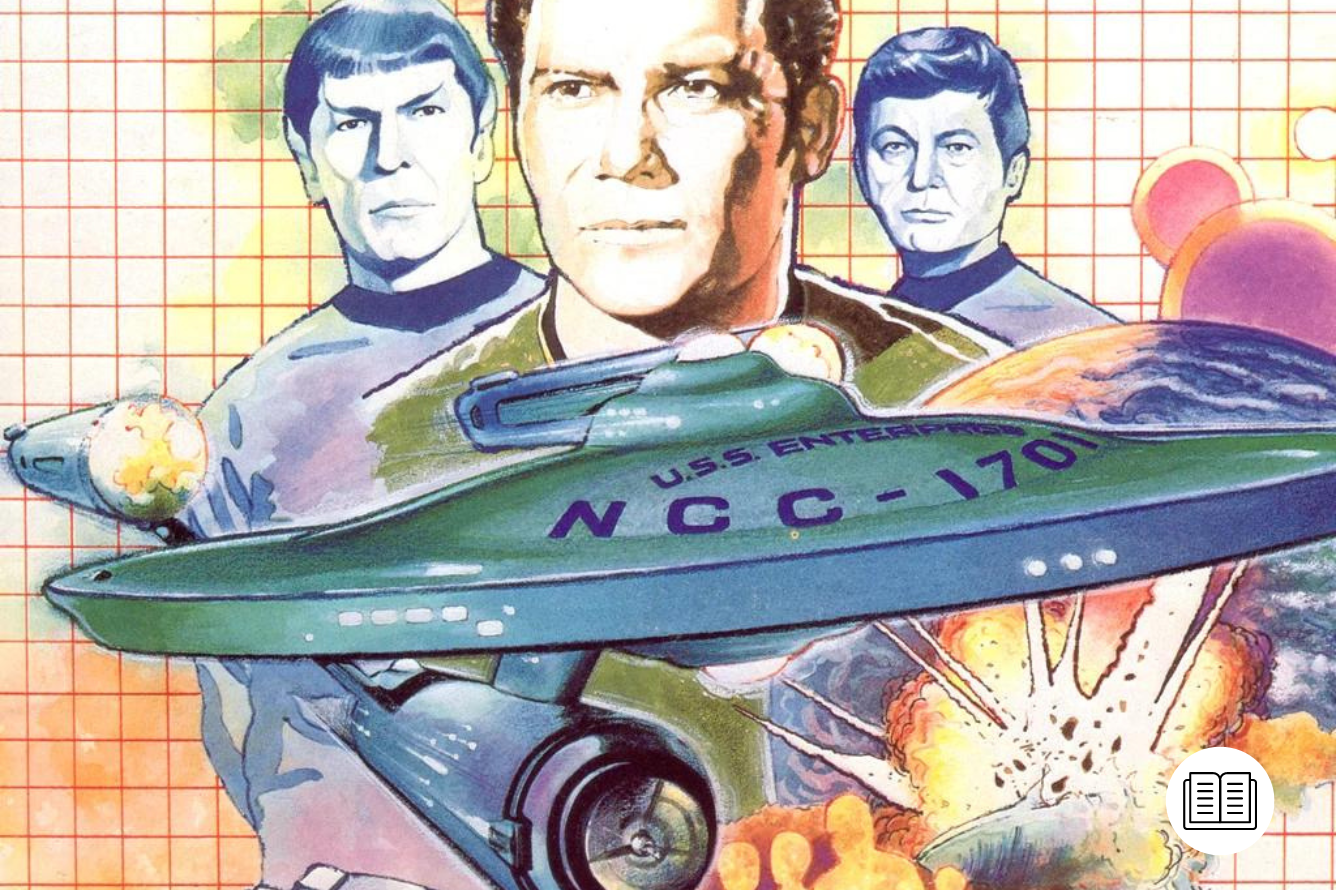Back in the 1980s, a British company set out on a two-year mission to bring the flavor of the original Star Trek TV series to computer screens, little realizing the problems and changes that would happen along the way.
The Rebel Universe was not the first official Star Trek game, but it was eagerly anticipated after it was announced by publishers Beyond Software in 1986. It was 20 years since the debut of Star Trek: The Original Series and the fourth of the movies featuring the original cast (Star Trek IV: The Voyage Home) was earning good money at the box office. The show’s creator, Gene Roddenberry, had also returned to Paramount to begin developing a new TV series – Star Trek: The Next Generation. Contracts were signed with Simon & Schuster in New York, acting on behalf of Paramount. The pressure was on to deliver a good game…
As Told By


Pete Moreland (Project Manager; Firebird Software) / Richard Hewison (playtester; Firebird Software)
The announcement of the game, based on the original TV series, took place at the Personal Computer World Show 1986 held at Olympia. The Beyond stand was made to represent half of the Enterprise bridge, in a semi-circle with a roof above it bearing the famous ship’s number. Around the wall at the back of the stand were framed pictures of the main Star Trek characters that appeared in the game. The grabs were taken from VHS videos by Beyond and then enlarged and framed for the show.
The Atari ST version came first, programmed by G. P. Everitt (nicknamed Kenny after the DJ) and Steve Cain, who had previously been at Denton Designs. Their other projects included Black Lamp on the ST and Amiga, and they would later go on to work at Psygnosis. Sadly, Steve Cain passed away in 2006 from lung cancer shortly after retiring from the games industry. His career took him to many companies, from the original Imagine here in the UK to Acclaim, and he was one of the founding members of Denton Designs. Colleagues who worked with him remember him as larger than life, with a great sense of humor that never left him even during his illness.
Beyond may have started the project, but ultimately it would be Firebird Software who published it, having purchased the label from EMAP. Pete Moreland took charge as the project manager at Firebird and is also a fan of the TV show. “I love The Original Series; The Next Generation was okay – the rest has been crap.” Pete still has a framed Spock picture from the 1986 announcement on his wall at home.

One of the key decisions made was to bring in Mike Singleton to help with the game design. After all these years, Pete Moreland is vague about when and why this happened. “Simon Goodwin would have made that decision, I guess. I can’t tell you how early. I really don’t remember.” This meant delays for two other projects – Dark Sceptre, a role-playing game Mike was developing for Firebird, and Eye of the Moon (the third game in the Lords of Midnight series, eventually canceled – Beyond had published the first two games, Lords of Midnight and follow-up Doomdark’s Revenge).
Richard Hewison remembers the game well, as he was working at Firebird during the development. “I was a playtester on the C64 and PC conversions. The PC conversion was completed first, followed by the C64. Steven Elward, an Australian who had moved to the UK, did the PC version and ‘Foo’ [Fouad Katan] was responsible for the C64. He also ran the software development company Bits and had previously coded Empire for Firebird.”
Star Trek: The Rebel Universe Gameplay
An important aspect of the game was portraying the different characters on the bridge of the Enterprise, and their department’s responsibilities. The “multivision” screen layout gave one main picture (where options were selected, and the action happened) with sub-screens around the edge available at a click. This allowed you to switch between tasks quickly, and to have quick access to recently used screens. The pointer used by the game was the Star Trek delta-shield icon worn on the shirts of the characters.
Clicking on McCoy, for example, brought up the medical status of the senior crew. Mr. Sulu oversaw navigation, with the course plotted on a rotating starfield. Arriving at the planet, you would get a static picture of Enterprise in orbit.
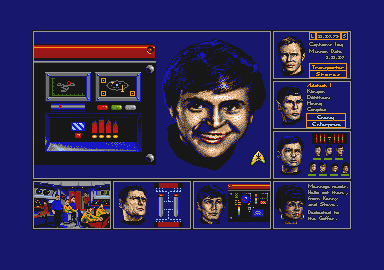
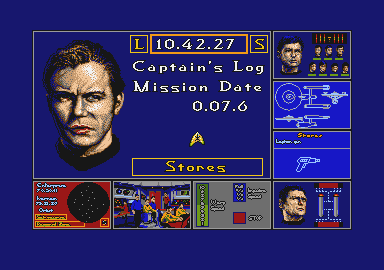
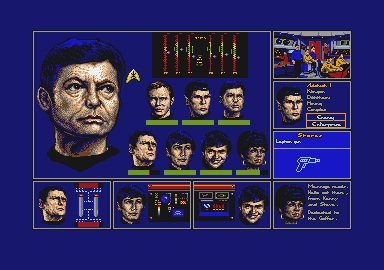
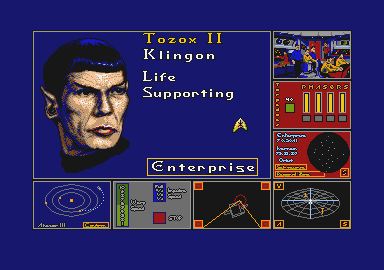
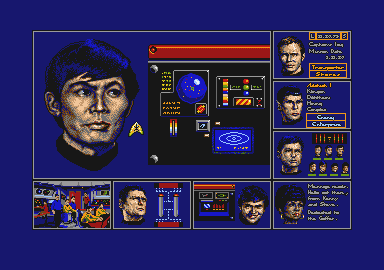
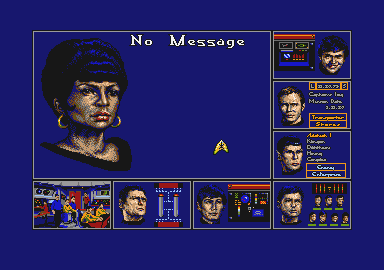
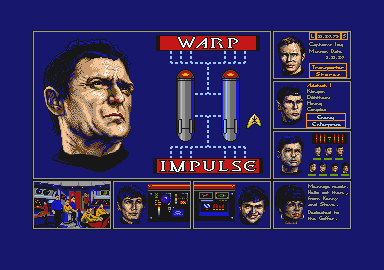
Screenshots from Star Trek: The Rebel Universe show the bridge crew and their functions, with the “multivision” screens around the edge allowing you to move between the different bridge crew during the course of the game. | Firebird, 1986.
To get down to the planet, the player must decide which characters are going to form the “landing party” by moving the heads onto the transporter platform. On the surface, you would encounter a series of problems to be negotiated. The landing party members could give advice by clicking on them, and then an action (such as ‘use phaser’) would be selected.
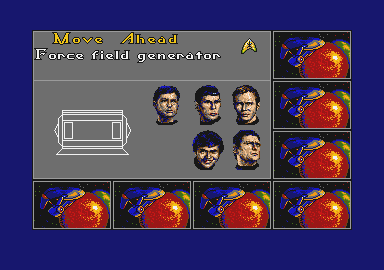
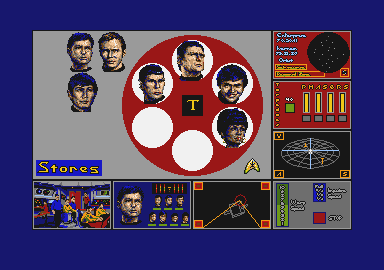
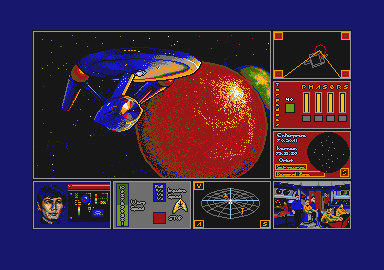
The basic process of beaming down an Away Team and setting them against a task in Star Trek: The Rebel Universe. | Firebird, 1986.


